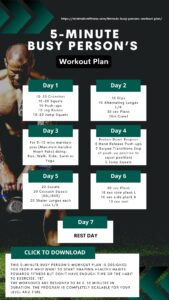Just when you think you have your kettlebell swing form down, you realise that there’s more to it than just swinging the weight back and forth for apparently little progress other than a twinged back. The swing is a staple exercise that needs mastering.
The problem with performing a kettlebell swing is there is no shortcuts. When it comes to hacking the hinge, you have to take the time to master all the steps below before you can confidently say you’ve mastered the deadlift and kettlebell swing.
The swing is also not a new exercise. Kettlebells themselves have been around since the 1700s in Europe, they have been around where strongmen used it to show their strength to audiences across Europe.
In the 1800s, the Russian physician Vladislav Kraevsky, considered by many to be the country’s founding father of Olympic weight training, popularised kettlebells. After travelling the world for 10 years looking for the best strength training exercise techniques, kettlebells and barbells formed the core equipment used at his training school.
The ‘Russian’ kettlebell swing evolved to become a foundational exercise for athletes and soldiers. Kettlebell exercises led to government action in 1981 where kettlebell training was mandated for citizens due to the benefits to a person’s health and productivity.
So if the Soviet Union felt it was a good use of time to mandate kettlebell exercises during the height of the cold war, you can mandate this foundational kettlebell swing exercise on yourself, for its combined functional strength and cardio building qualities.
Related Posts:
- Master the kettlebell windmill exercise in 3 steps
- 28 Kettlebell Exercises You Must Master
- Learn the kettlebell clean | The Definitive 6 step Guide
- Get a better Kettlebell Press with these 5 tips
- Master the kettlebell snatch in 5 steps
- 5 Steps To A Better Turkish Get Up
- Kettlebells: The Ultimate Guide To Strength Training
So what are the benefits of kettlebell swings?
The benefits of kettlebell swings are many; just some include building lean muscle mass, strengthening your back and core muscles/trunk stability, and helping increase your cardio endurance. Kettlebell training is also great for losing weight, especially in metabolic conditioning circuits.
When doing kettlebell workouts, it is essential to remember that form comes before speed; otherwise, you risk injury! This is why some prefer using lighter kettlebells when attempting more repetitions.
Training Program focused on Kettlebell exercises
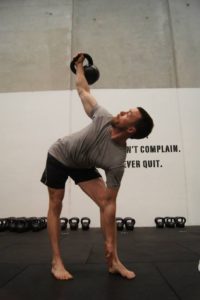
Check out our Kettlebell 66 Program! An easy to follow training program for those who like kettlebell exercises.




What muscles do kettlebell swings work?
The kettlebell swing is one of the best exercises for working your posterior chain, which includes your back, glutes, hamstrings, and calves. If you spend a lot of the day at a desk, you may need to focus on mobility and stability before rushing into the swing itself.
I like the kettlebell swing as it is a powerful compound movement that helps strengthen the muscles used for running, jumping, lifting weights off the ground or at waist level.
How to do kettlebell swings properly
Kettlebell swings make my back hurt!! That’s a common one.
Is it the kettlebell swing that makes your back hurt or the way you swing that makes your back hurt?
Stop blaming the kettlebell when your swing form sucks. I’ve spent the last eight years teaching people how to swing kettlebells properly. It’s one of the most underrated but poorly executed movements in fitness if you’re not quite ready for swings you can still work on other deadlift variations.
Additionally, there are a few kettlebell swing variations (for example, American versus Russian kettlebell swing), so be mindful to learn the proper kettlebell swing form.
In the video, you might also notice that there is some bonus content for the single-arm (or one-arm) kettlebell swing. Be sure to master the two-handed swing before moving on but once you’re ready, go for it!
Six tips to master your kettlebell swing form
1. Hip Hinge Patterning
Improving your form starts with learning what the correct hinge pattern feels like. Learn to load your posterior chain correctly, as this will drastically improve your ability to load the movement and dynamically load your swing.
Your swing should be a horizontal expression of force. Try to push it forward, not upwards. Keep your weight shifted to your heels and loaded through your glutes and hamstrings. This will go a long way to using that stored elastic energy needed for the correct swing form.
Be mindful this is different to the kettlebell snatch or the American kettlebell swing. These movements are more vertical expressions of force and naturally encourage “quadding”.
If you’re someone that sits down all day, you may have lazy glutes and tight hamstrings, so you might find this movement difficult.
Related Posts:
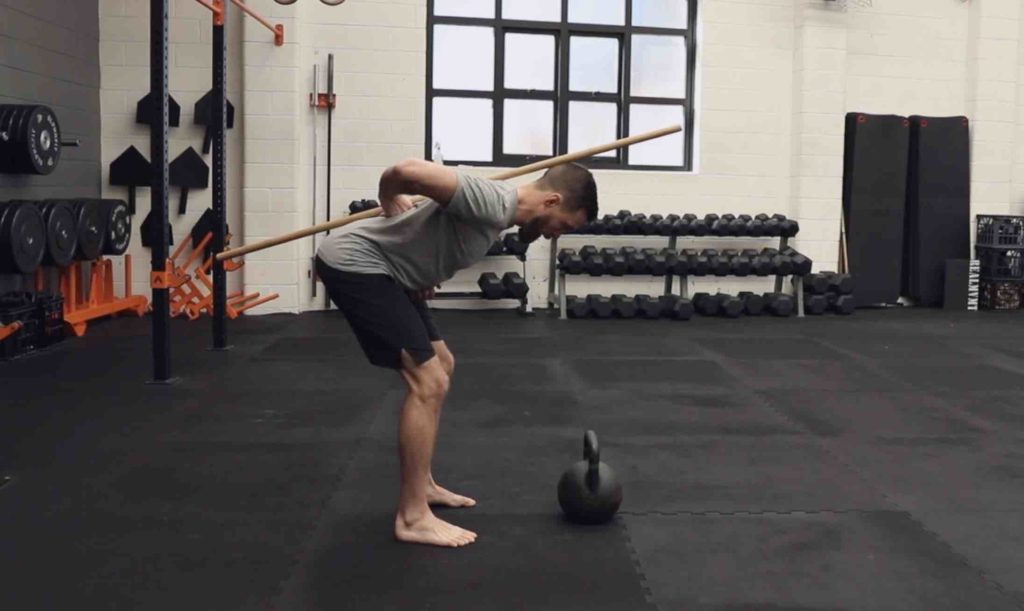
2. The Kettlebell Deadlift
Slow is smooth, smooth is fast.
Before we move to the ballistic nature of the swing, we must learn to control the movement slowly. The kettlebell deadlift is a great movement to achieve this.
You can perform it using a single or double kettlebell, asymmetrically loaded (single side) or even a single leg.
Related Posts:
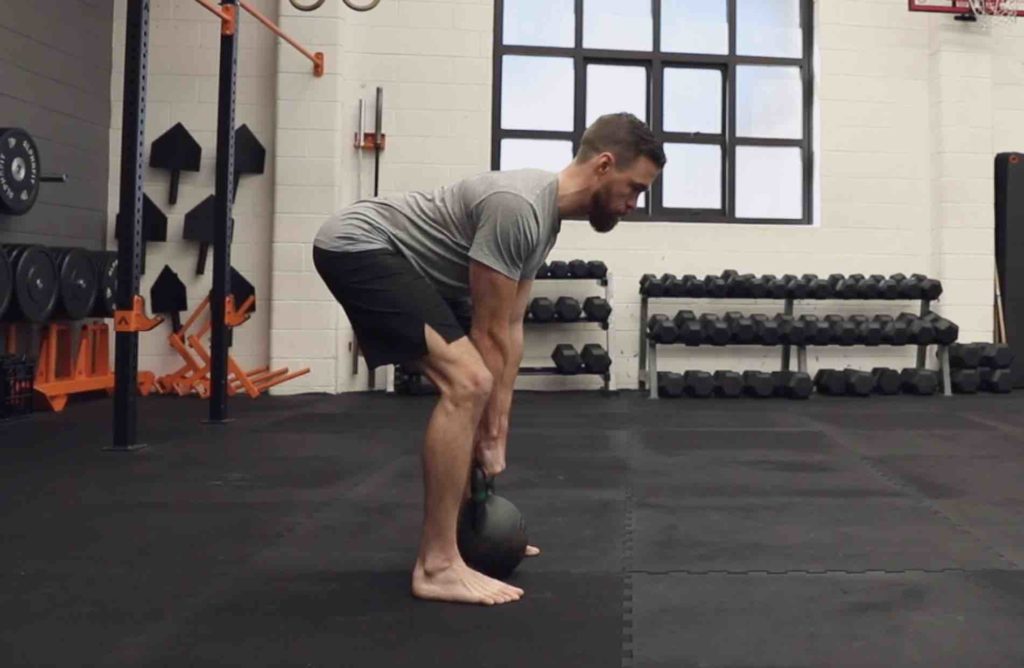
3. Breathing
Maintaining a strong and stable spine position during your kettlebell swing comes down to having a biomechanical breathing match. Sounds complicated? It’s easier than it sounds.
All you need to do is breathe in at the bottom of your swing and use a fast exhale at the top of the swing. This will help to increase trunk stability and keep you in a safe position.
You can learn more about it here.
4. The Set Up and The Hike
The kettlebell pick up and place down when you have perfect form should be effortless and safe.
Keep your weight shifted to your heels and pretend you’re hiking the kettlebell (like an NFL player). This will allow you to maintain a neutral spine. In addition, performing this move without rounding your back will help reduce your risk of injury.
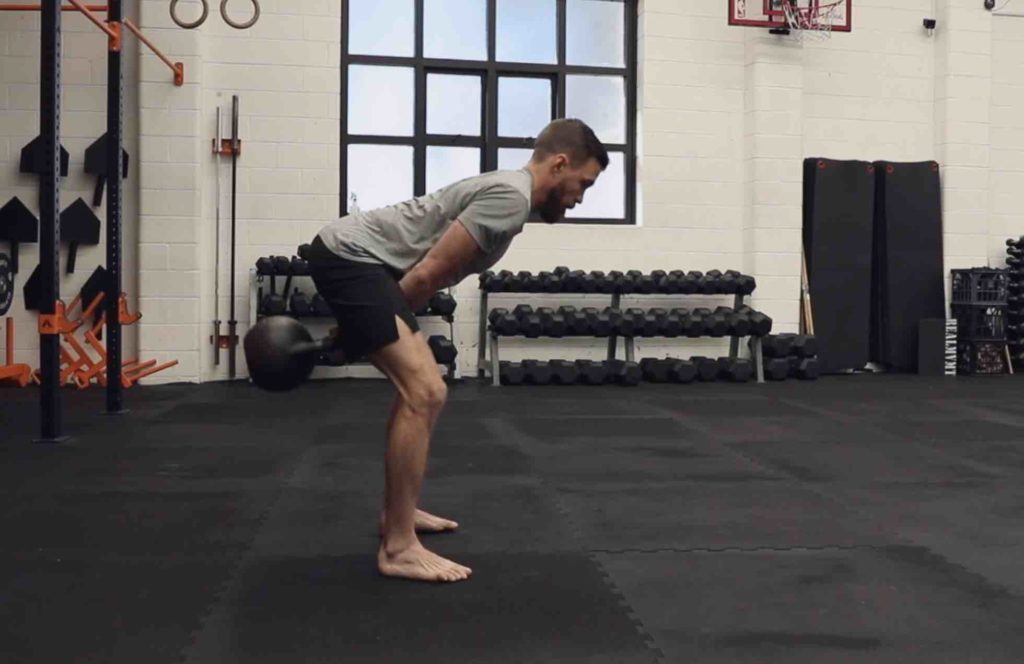
5. Dead Stop or Power Swings
A dead stop or power swing involves performing the kettlebell swing movement using a single swing. This allows you to focus on your form without adding a lot of fatigue to the movement.
6. The Fall Drill
Feel like your bell is pulling you down into a rounded back during your swings? You can prevent that from happening by placing another kettlebell or similar object between your legs first.
If you hit the object as you lower, that means you’re not holding the bell high enough to maintain a neutral spine.
This external cue is a powerful teaching mechanism because it doesn’t allow you to do the wrong thing!
Not quite loving the kettlebell swing? Try these alternative kettlebell swing exercises for some variety: hip thrusts, Romanian deadlifts, banded or cable pull-throughs and nordic curls.
